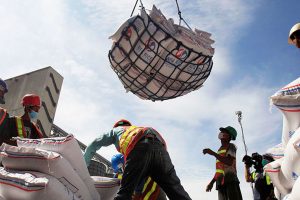THE Rice Tariffication Law can serve as a model for imports of other farm commodities, National Economic and Development Authority (NEDA) Secretary Arsenio M. Balisacan said.
“We must learn from the lessons from the implementation (of the Rice Tariffication Law) and see how we can expand that to other commodities. We need to make our trade policy more transparent and supportive of our economic agenda,” Mr. Balisacan told reporters on Friday.
Signed in 2019, the Rice Tariffication Law liberalized rice imports by allowing private parties to import rice, formerly a monopoly of the National Food Authority (NFA). Importers must pay tariffs on Southeast Asian grain of 35%, earning revenue for the government in the process.
The law also limited the NFA’s functions to maintaining a rice reserve to stabilize prices and supply grain to calamity-hit regions.
Mr. Balisacan said that the law has so far achieved its objective of keeping rice prices stable.
“Our assessment so far is that the law has done a good job in achieving what we wanted, and that is stabilizing the price of rice, making the market more predictable and efficient so that when there are sharp swings in the prices, the private sector can respond quickly or (the government) can respond quickly,” he said.
“We have to strike a balance, of course, in achieving those objectives, particularly food security and this whole business of picking up the industry and getting it to generate more quality jobs,” he added.
In the five months to May, the Philippines imported 1.62 million metric tons (MT) of rice, the Bureau of Plant Industry estimated. This was 7.69% higher year on year.
The United States Department of Agriculture projected Philippine rice imports to hit 3.8 million MT this year. — Luisa Maria Jacinta C. Jocson

